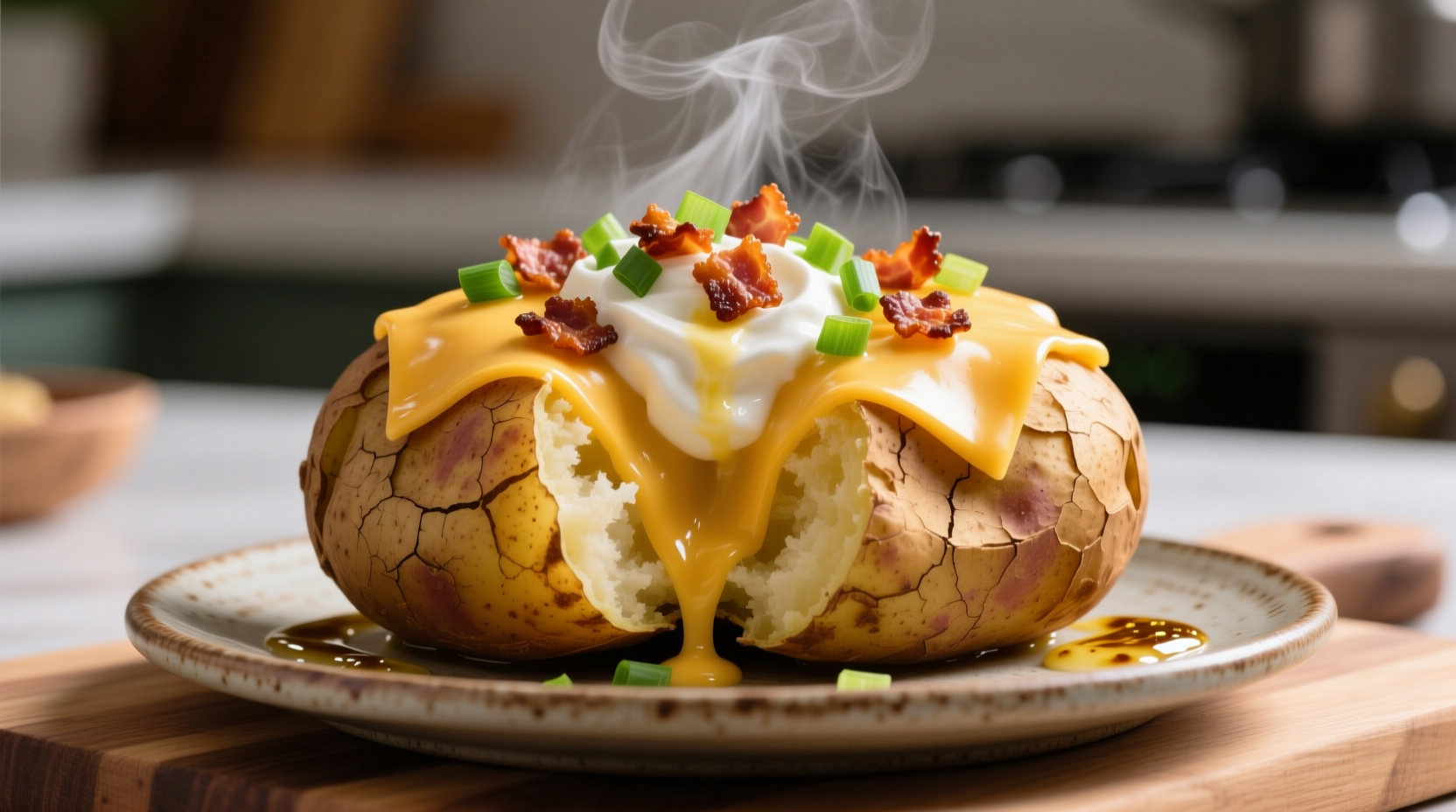The best baked potato toppings balance texture, temperature, and flavor profiles to complement the potato's natural earthiness. Classic options like sour cream and chives work because they provide cooling contrast to the hot potato while adding creamy richness. For maximum enjoyment, combine elements from three categories: creamy/fatty components (sour cream, cheese), savory elements (bacon, herbs), and textural contrasts (crunchy toppings like toasted seeds). Nutritionally, baked potatoes with balanced toppings provide complex carbohydrates, fiber, and essential vitamins while keeping fat content moderate when prepared thoughtfully.
Why Toppings Transform Your Baked Potato Experience
Most home cooks underestimate how strategic topping selection can elevate a simple baked potato from bland to extraordinary. The magic happens through flavor layering and textural interplay. When you understand the science behind successful pairings, you'll consistently create satisfying potato experiences that feel restaurant-quality.
According to the USDA FoodData Central, a medium baked potato (173g) provides 161 calories, 4.3g fiber, and significant potassium and vitamin C. The right toppings enhance these nutritional benefits while creating satisfying meals that keep you full longer.
The Flavor Foundation: What Makes a Perfect Topping Combination
Professional chefs follow a simple formula when designing potato toppings: 40% creamy/fatty, 30% savory, and 30% textural elements. This ratio creates balanced bites that engage multiple senses simultaneously.
| Category | Function | Top Examples |
|---|---|---|
| Creamy/Fatty | Carries flavors, adds richness | Sour cream, Greek yogurt, melted cheese, avocado |
| Savory | Provides umami depth | Bacon, caramelized onions, roasted garlic, herbs |
| Textural | Creates contrast | Toasted seeds, crumbled crackers, crispy shallots |
Classic Combinations That Never Disappoint
Before experimenting with creative options, master these foundational pairings that have stood the test of time:
- The Traditional Trio: Sour cream, chives, and bacon bits - this combination works because the cool sour cream contrasts with the hot potato while the bacon adds saltiness and crunch
- Loaded Baked Potato: Sharp cheddar, crispy bacon, and chives - the melting cheese creates a rich blanket that traps heat while the bacon adds savory depth
- Simple European Style: Butter, fresh herbs, and sea salt - highlighting the potato's natural flavor with minimal interference

Creative Toppings for Culinary Adventure
Once you've mastered the classics, expand your repertoire with these globally-inspired combinations that bring restaurant-quality flavors to your kitchen:
Mexican Street Corn Inspired
Combine Mexican crema (or sour cream with lime zest), crumbled cotija cheese, smoked paprika, and fresh cilantro. The James Beard Foundation notes that this combination works because the creamy element carries the smoky spices while the cheese adds salty complexity that complements the potato's earthiness.
Mediterranean Herb Garden
Mix Greek yogurt with lemon zest, chopped Kalamata olives, roasted red peppers, and fresh oregano. This topping provides bright acidity that cuts through the potato's starchiness while adding Mediterranean flair.
Asian Fusion
Create an umami bomb with miso butter, toasted sesame seeds, scallions, and a drizzle of chili oil. Food science research shows that glutamate in miso enhances the potato's natural savory notes through synergistic flavor pairing.
Dietary-Specific Topping Solutions
Adapting baked potato toppings for different dietary needs doesn't mean sacrificing flavor. The American Heart Association recommends these heart-healthy alternatives that maintain satisfaction while supporting wellness goals:
- Vegan: Cashew cream sauce, roasted mushrooms, and nutritional yeast creates a cheesy flavor profile without dairy
- Gluten-Free: Focus on naturally GF ingredients like avocado, salsa, and seeds (pumpkin, sunflower)
- Low-Sodium: Use lemon juice, fresh herbs, and roasted garlic instead of salt-heavy options
- High-Protein: Black beans, Greek yogurt, and toasted chickpeas boost protein content significantly
Pro Techniques for Perfect Topping Application
How you apply toppings matters as much as what you use. Professional chefs follow these timing principles:
- Immediately after baking: Cut open potato and fluff interior with fork to release steam
- After 2 minutes: Add fats (butter, olive oil) to allow absorption into potato flesh
- After 3 minutes: Add creamy elements that might curdle with extreme heat
- Just before serving: Add fresh herbs and crunchy toppings to preserve texture
This sequence prevents sogginess while maximizing flavor absorption. The America's Test Kitchen research shows that allowing the potato to rest slightly before adding toppings prevents steam from diluting your carefully crafted combinations.
Avoiding Common Topping Mistakes
Even experienced cooks make these topping errors that diminish the final result:
- Overloading with wet ingredients: Creates a soggy, unappetizing texture - limit liquids to 2 tablespoons per potato
- Adding all toppings at once: Destroys textural contrast - follow the timing sequence above
- Using cold toppings on hot potatoes: Causes temperature shock that affects flavor perception
- Ignoring seasoning balance: Always taste your topping mixture before applying
Creating Your Signature Topping Blend
Now that you understand the principles, experiment with your own combinations. Start with this formula:
1 base (sour cream/yogurt/cheese) + 1 savory element (bacon/herbs/mushrooms) + 1 textural element (seeds/croutons/crispy onions) + 1 flavor accent (hot sauce/citrus zest/spice blend).
Remember that the best baked potato toppings enhance rather than overwhelm the potato's natural flavor. Keep a kitchen journal of your experiments to track which combinations work best for different occasions and preferences.











 浙公网安备
33010002000092号
浙公网安备
33010002000092号 浙B2-20120091-4
浙B2-20120091-4